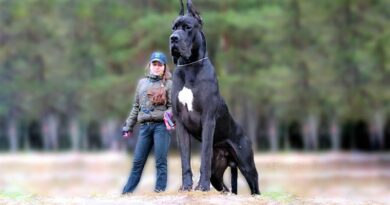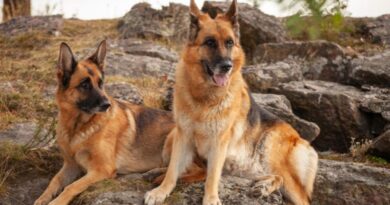Welcome to our comprehensive guide on the diverse world of wild dogs! In this detailed exploration, we delve into the fascinating realm of the ten distinct types of wild dogs inhabiting various ecosystems across the globe. From the agile African wild dog to the elusive dhole of Asia, these species exhibit unique behaviors, adaptations, and survival strategies. Unravel the intriguing traits that set each breed apart, from their hunting techniques to social structures.
Whether you’re a wildlife enthusiast or seeking to expand your knowledge, this guide aims to provide a captivating insight into the lives and habitats of these remarkable creatures. Join us on this educational journey as we celebrate the diversity and resilience of the 10 types of wild dogs.
Types Of Wild Dogs
African Wild Dog (Lycaon pictus)
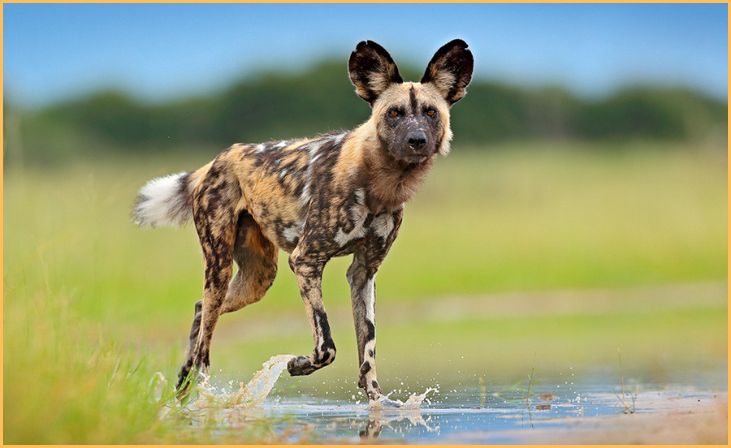
The African Wild Dog, scientifically known as Lycaon pictus, is a fascinating and endangered species native to sub-Saharan Africa. These striking canids are instantly recognizable by their vibrant coat, displaying patches of black, yellow, and white, making each individual’s pattern unique. Living in cohesive packs of 6 to 20 members, they exhibit intricate social structures and cooperative hunting behaviors.
Their preferred habitats include savannas and arid zones, where they hunt in organized groups, chasing down prey with remarkable stamina and teamwork. Unfortunately, African Wild Dogs face severe threats due to habitat fragmentation, human encroachment, and diseases like rabies and distemper. Their endangered status highlights the urgency of conservation efforts focused on protecting their habitats and mitigating human-wildlife conflicts to ensure the survival of this remarkable species.
Dhole (Cuon alpinus)
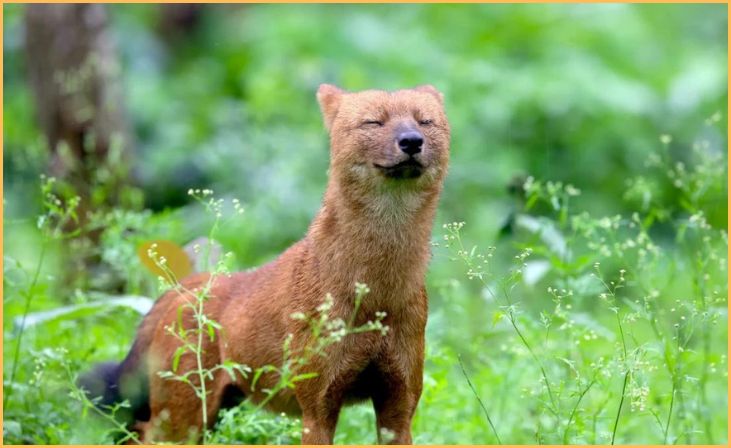
The Dhole, scientifically referred to as Cuon alpinus, is an adaptable and social canid species native to parts of Asia. Known for its reddish-brown coat and distinctive bushy tail, these canids thrive in diverse habitats, from dense forests to grasslands. Living in packs of up to 12 individuals, dholes exhibit a sophisticated social structure and employ cooperative hunting tactics to take down prey much larger than themselves.
Their specialized dentition, with sharper premolars for tearing meat, aids in their hunting success. Communicating through a series of whistles and yips, dholes showcase strong social bonds within their packs. Found across India, Southeast Asia, and parts of Russia and China, these canids face threats from habitat loss and human encroachment, emphasizing the importance of conservation efforts to safeguard their populations and habitats.
Red Fox (Vulpes vulpes)
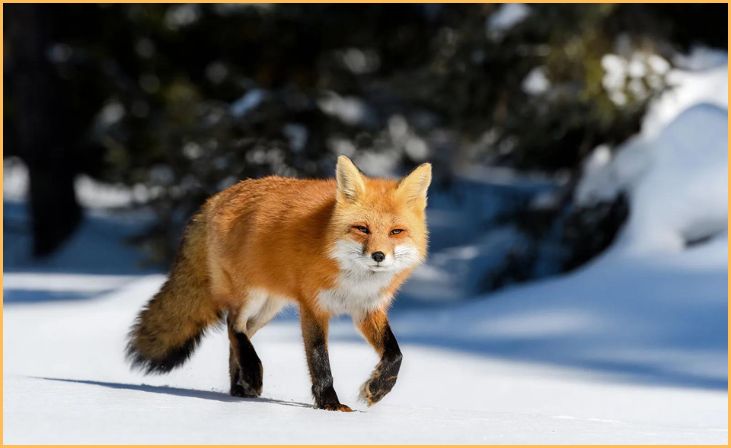
The Red Fox, scientifically known as Vulpes vulpes, is an iconic canid found across the Northern Hemisphere, renowned for its adaptability and intelligence. Recognizable by its reddish-orange fur, pointed ears, and bushy tail, this species thrives in various habitats, spanning forests, grasslands, and urban areas. Its omnivorous diet includes small mammals, birds, fruits, and insects, showcasing its versatility as a hunter. Red foxes employ cunning hunting techniques, using stealth and agility to capture prey.
While their adaptation to urban environments leads to human-wildlife conflicts, it also demonstrates their resilience in changing landscapes. Their global distribution throughout Europe, Asia, North America, and parts of North Africa underscores their remarkable ability to adapt and survive in diverse environments, albeit facing challenges from habitat fragmentation and interactions with human activities.
Gray Wolf (Canis lupus)
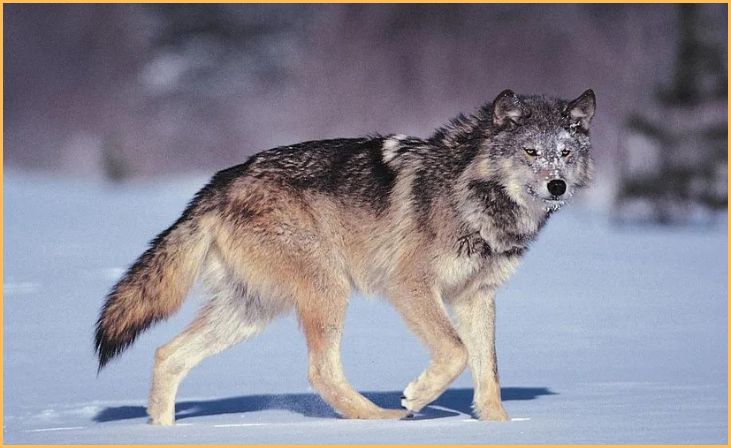
The Gray Wolf, scientifically identified as Canis lupus, stands as the largest wild member of the Canidae family, renowned for its intelligence and adaptability. With coat colors varying from gray to black and white, these wolves exhibit remarkable diversity across their ranges. Historically and culturally significant, they hold revered positions in various societies worldwide, symbolizing strength, loyalty, and familial bonds.
Thriving in packs led by an alpha pair, they exhibit intricate communication through howls, body language, and scent marking, aiding their cooperative hunting strategies. Wolves play a crucial ecological role by regulating prey populations, contributing to healthy ecosystems. Despite successful conservation efforts in some regions, conflicts with livestock and habitat loss challenge their survival. Understanding their importance in the intricate balance of ecosystems remains pivotal in ensuring the conservation of this iconic species.
Also Read: Top 10 Cheapest Dogs
Ethiopian Wolf (Canis simensis)
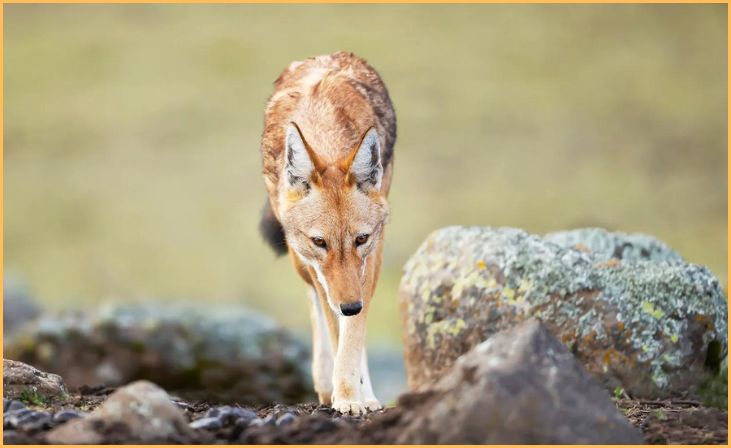
The Ethiopian Wolf, scientifically termed Canis simensis, is an endangered and endemic canid species confined to the Ethiopian highlands. Sporting a russet-red coat and slender build, these wolves thrive in Afroalpine regions, particularly the Bale and Simien Mountains, at elevations above 3,000 meters. Their specialized diet, predominantly reliant on rodents, showcases their unique adaptation to the high-altitude grasslands. Ethiopian wolves display a complex social structure, with monogamous breeding pairs and cooperative care for young pups, emphasizing their strong family bonds.
Unfortunately, they face threats from habitat fragmentation, disease transmission from domestic dogs, and human encroachment. Conservation efforts primarily focus on community engagement, disease control, and habitat preservation, emphasizing the urgency of protecting these charismatic and endangered canids to ensure their survival in their highly specialized and limited habitat.
Maned Wolf (Chrysocyon brachyurus)

The Maned Wolf, scientifically known as Chrysocyon brachyurus, is a striking canid found in South America, particularly in Brazil, Paraguay, and Argentina. Despite its resemblance to foxes, it belongs to a separate genus and stands out with its reddish fur, long legs, and black mane. Preferring grassland habitats, these solitary creatures navigate through tall vegetation using their long legs.
Their omnivorous diet includes fruits, small mammals, and insects, contributing significantly to seed dispersal and maintaining ecological balance. While not currently endangered, maned wolves face threats from habitat loss and road accidents. Conservation initiatives aim to safeguard their habitats and mitigate human-wildlife conflicts to ensure the preservation of these unique canids and their vital ecological role in the South American grasslands.
Indian Wild Dog (Cuon alpinus)

The Indian Wild Dog, scientifically termed Cuon alpinus, is a highly adaptable canid species found across India and parts of Southeast Asia. Also known as the dhole, it boasts a reddish-brown coat and bushy tail, thriving in various habitats from dense forests to grasslands. Living in packs, dholes exhibit a sophisticated social structure and employ cooperative hunting tactics to tackle prey larger than themselves.
Their specialized dentition aids in tearing meat, enhancing their hunting prowess. These canids communicate through distinctive whistles and yips, showcasing strong social bonds within their packs. Despite their adaptability, they face threats from habitat loss and human encroachment, necessitating focused conservation efforts to protect their populations and habitats in order to ensure the survival of this remarkable and culturally significant species in the region.
Bush Dog (Speothos venaticus)
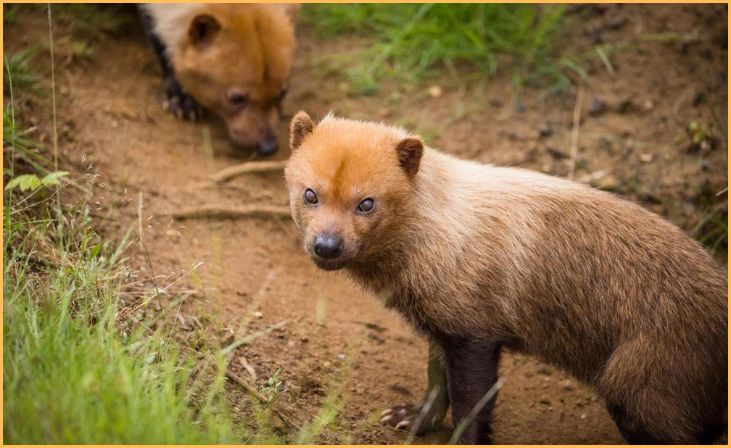
The Bush Dog, scientifically referred to as Speothos venaticus, is a unique and elusive canid found in South America, particularly in habitats across the Amazon Basin and parts of Central America. These small, stocky canids boast a distinctive chestnut-red coat and a short bushy tail. Unlike many other wild dog species, bush dogs are known for their solitary and secretive nature, often navigating through dense forests and wetlands. They exhibit social behavior within family groups, forming packs of up to 12 individuals.
Their diet primarily consists of small mammals and birds. Threatened by habitat loss due to deforestation and human activity, bush dogs require focused conservation efforts to safeguard their habitats and mitigate the challenges posed by human-wildlife conflicts, ensuring the preservation of this lesser-known and vulnerable canid species.
Australian Dingo (Canis lupus dingo)

The Australian Dingo, scientifically classified as Canis lupus dingo, holds a unique place in Australia’s ecosystem and cultural heritage. These canids, believed to have descended from Asian wolves, display diverse coat colors ranging from sandy yellow to red and even black. Historically intertwined with Indigenous Australian cultures, dingoes are considered apex predators, playing a vital ecological role in maintaining balance within their habitats.
Their adaptability to diverse environments, from deserts to forests, showcases their resilience. Dingoes exhibit both solitary and pack behaviors, often forming cohesive family units. However, human-wildlife conflicts and hybridization with domestic dogs threaten their genetic purity and survival. Conservation efforts seek to address these challenges, emphasizing the importance of preserving the dingo’s role in Australia’s biodiversity and respecting their cultural significance in the landscape.
Also Read : 10 Thoughtful Pit Bull Memorial Ideas
Arctic Fox (Vulpes lagopus)
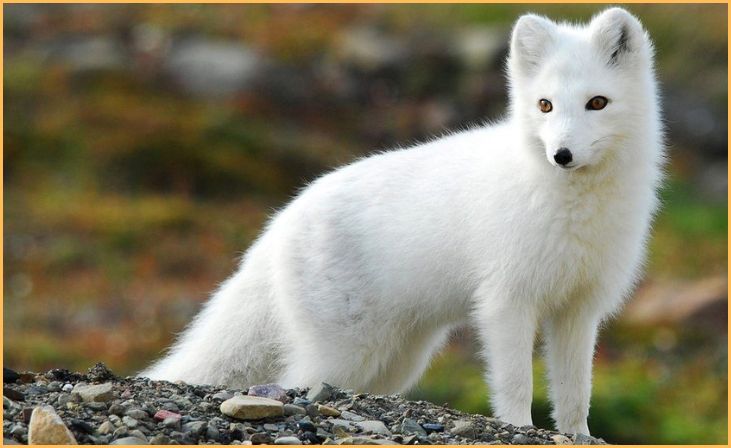
The Arctic Fox, scientifically known as Vulpes lagopus, thrives in the extreme cold of the Arctic tundra, exhibiting remarkable adaptations for survival in harsh environments. Renowned for its thick, snow-white fur during winter and brownish-gray coat in summer, this canid’s seasonal camouflage aids in hunting and evading predators. Their compact size, keen sense of smell, and exceptional hearing assist in locating prey, which includes small mammals, birds, and fish.
Arctic foxes endure temperatures as low as -50°C (-58°F), utilizing dens for shelter and raising their young. Facing threats from climate change and habitat alteration, these resilient canids remain a crucial part of the Arctic ecosystem. Conservation efforts focus on understanding their changing habitats and implementing measures to ensure the survival of this iconic species in the challenging Arctic landscape.
Conclusion
Exploring the diverse world of wild dogs unveils not just their uniqueness but also their vulnerability. From the majestic Ethiopian wolf to the cunning bush dog, these species face increasing challenges in a rapidly changing world. Preserving their habitats and fostering conservation efforts is crucial to ensuring their survival. By understanding their behaviors, habitats, and the threats they confront, we can take meaningful steps to protect these incredible creatures.
Let’s unite in safeguarding the future of these 10 types of wild dogs, honoring their place in the intricate tapestry of our planet’s biodiversity. Join the cause to conserve and appreciate these remarkable animals, ensuring they continue to roam our world for generations to come.
FAQs
Wild dogs thrive in diverse habitats, including savannas, forests, deserts, and even mountainous regions. Their adaptability allows them to inhabit a wide range of environments, showcasing their resilience in various landscapes.
Communication among wild dog packs primarily involves vocalizations such as yips, whines, and growls, along with body language like facial expressions and posture. These forms of communication are vital for coordinating hunts and maintaining social bonds within the group.
Unfortunately, many wild dog species face threats due to habitat loss, human encroachment, and conflicts. While some, like the African wild dog, are endangered, others, such as the dhole, are classified as vulnerable, emphasizing the urgent need for conservation efforts.





